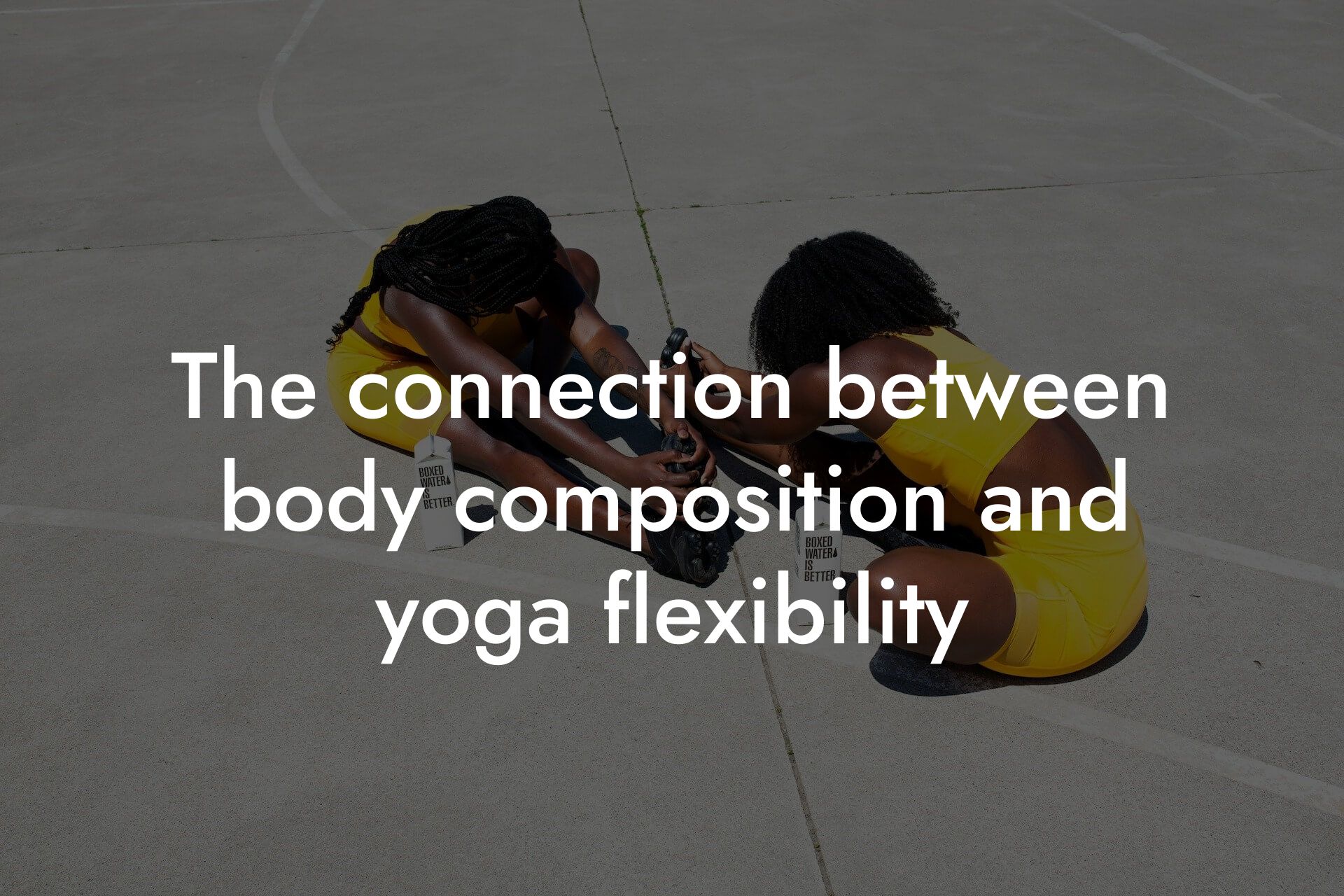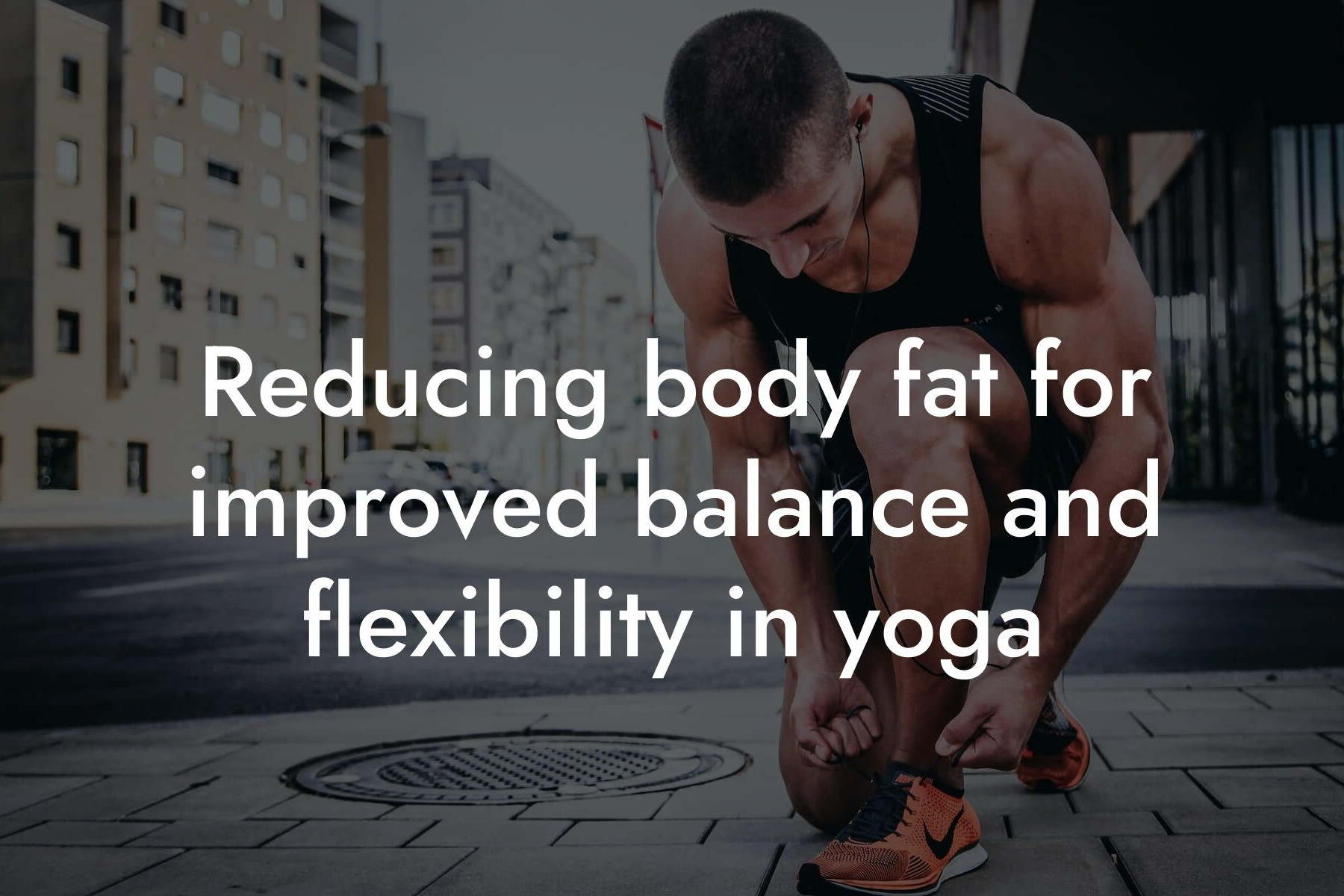Bone density is a critical aspect of overall health, and it plays a significant role in yoga practice. As high-earning professionals, you understand the importance of maintaining a healthy physique, and yoga is an excellent way to achieve that. However, it's essential to understand how bone density affects your yoga practice and what you can do to maintain healthy bones.
Table of Contents
What is Bone Density?
Bone density refers to the measure of the amount of minerals, such as calcium and phosphorus, in your bones. It's an indicator of bone strength and is usually measured by a DEXA (Dual-Energy X-ray Absorptiometry) scan. A DEXA scan provides a comprehensive assessment of your bone density, body composition, and fat percentage, giving you a clear picture of your overall health.
Why is Bone Density Important for Yoga Practitioners?
As a yoga practitioner, you're likely to engage in various postures, movements, and breathing techniques that can put stress on your bones. Maintaining healthy bone density is crucial to prevent injuries, fractures, and osteoporosis. Yoga can be beneficial for bone health, but it's essential to understand how your bone density affects your practice.
The Risks of Low Bone Density in Yoga
If you have low bone density, you're more susceptible to injuries and fractures, especially in weight-bearing joints like the hips, knees, and spine. Yoga postures that involve bending, twisting, or weight-bearing can exacerbate low bone density, leading to:
- Vertebral compression fractures
- Osteoporotic fractures
- Stress fractures
- Chronic pain and inflammation
How Yoga Can Benefit Bone Density
Yoga can be an excellent way to improve bone density, especially for high-earning professionals who lead busy lifestyles. Yoga postures that involve weight-bearing, resistance, and flexibility exercises can:
- Increase bone density in the hips, spine, and wrists
- Improve balance and reduce the risk of falls
- Enhance muscle strength and flexibility
- Reduce the risk of osteoporosis and fractures
Modifying Your Yoga Practice for Bone Density
If you have low bone density or are at risk of osteoporosis, it's essential to modify your yoga practice to accommodate your needs. Here are some tips:
- Avoid deep forward bends and twists that can put pressure on your spine
- Use props and modifications to reduce the risk of injury
- Incorporate weight-bearing postures, such as tree pose and warrior II
- Focus on gentle, flowing movements and avoid jerky or bouncy transitions
- Incorporate exercises that target the core and glutes to improve overall strength and stability
Nutrition and Lifestyle Changes for Healthy Bone Density
In addition to modifying your yoga practice, it's essential to make nutrition and lifestyle changes to support healthy bone density. Here are some tips:
- Consume a diet rich in calcium and vitamin D
- Include foods that are high in omega-3 fatty acids, such as salmon and walnuts
- Stay hydrated by drinking plenty of water
- Avoid smoking and excessive alcohol consumption
- Get regular exercise, including weight-bearing and resistance training
Bone density is a critical aspect of overall health, and it plays a significant role in yoga practice. By understanding the risks and benefits of yoga on bone density, you can modify your practice to accommodate your needs and make nutrition and lifestyle changes to support healthy bones. At Tano Performance Group, we're committed to providing high-earning professionals like you with the tools and resources you need to maintain a healthy physique and achieve your fitness goals. Schedule a DEXA scan today and take the first step towards a stronger, healthier you.
Frequently Asked Questions
What is bone density and why is it important for yoga practitioners?
Bone density refers to the amount of minerals, such as calcium and phosphorus, present in the bones. It's a crucial aspect of overall health, especially for yoga practitioners, as it affects the risk of osteoporosis, fractures, and injuries. Maintaining healthy bone density is essential to support the musculoskeletal system and ensure a safe and effective yoga practice.
How does yoga impact bone density?
Yoga can have both positive and negative effects on bone density. On the one hand, weight-bearing yoga styles, such as Vinyasa Flow and Ashtanga, can help improve bone density by stimulating the growth of new bone tissue. On the other hand, certain yoga styles, like yin yoga, which involves prolonged periods of flexion and compression, can potentially decrease bone density if not practiced mindfully.
What are the risk factors for low bone density in yoga practitioners?
Risk factors for low bone density in yoga practitioners include a sedentary lifestyle, inadequate nutrition, hormonal imbalances, and a family history of osteoporosis. Additionally, certain yoga styles or practices that involve repetitive strain or high-impact movements can also increase the risk of low bone density.
How can I maintain healthy bone density as a yoga practitioner?
To maintain healthy bone density, it's essential to practice yoga in a way that promotes bone growth and strength. This can be achieved by incorporating weight-bearing postures, avoiding excessive flexion and compression, and incorporating exercises that target the core and pelvic floor muscles. Additionally, a balanced diet rich in calcium and vitamin D, along with regular exercise and stress management, can also support bone health.
What are the symptoms of low bone density in yoga practitioners?
Symptoms of low bone density in yoga practitioners may include chronic pain, stiffness, or numbness in the joints, particularly in the spine, hips, and wrists. Additionally, frequent injuries, poor posture, and decreased mobility can also be indicative of low bone density.
Can yoga help improve bone density in older adults?
Yes, yoga can be an effective way to improve bone density in older adults. Gentle, weight-bearing yoga styles, such as Hatha or Restorative yoga, can help stimulate bone growth and reduce the risk of osteoporosis. Additionally, yoga can also improve balance, flexibility, and overall physical function, reducing the risk of falls and fractures.
How can I modify my yoga practice to accommodate low bone density?
If you have low bone density, it's essential to modify your yoga practice to avoid putting excessive strain on your joints. This can be achieved by avoiding deep flexion and compression, using props to support your body, and incorporating gentle, weight-bearing postures. It's also important to listen to your body and avoid any postures that cause pain or discomfort.
What are the benefits of yoga for bone health?
The benefits of yoga for bone health include improved bone density, increased flexibility and range of motion, enhanced balance and coordination, and reduced risk of osteoporosis and fractures. Additionally, yoga can also improve overall physical function, reduce stress and anxiety, and promote a sense of well-being and relaxation.
Can yoga help reduce the risk of osteoporosis?
Yes, yoga can help reduce the risk of osteoporosis by improving bone density, enhancing muscle strength and flexibility, and promoting good posture and balance. Additionally, yoga can also help reduce the risk of falls and fractures, which are common complications of osteoporosis.
How does menopause affect bone density in yoga practitioners?
Menopause can have a significant impact on bone density in yoga practitioners, particularly if they are not practicing yoga in a way that promotes bone growth and strength. During menopause, the decline in estrogen levels can lead to a rapid loss of bone density, increasing the risk of osteoporosis and fractures.
Can yoga help alleviate menopause symptoms?
Yes, yoga can help alleviate menopause symptoms, including hot flashes, mood swings, and sleep disturbances. Additionally, yoga can also help improve bone density, reduce the risk of osteoporosis, and promote overall physical and emotional well-being during menopause.
What is the role of nutrition in maintaining healthy bone density?
Nutrition plays a critical role in maintaining healthy bone density. A diet rich in calcium, vitamin D, and other essential nutrients, such as vitamin K and magnesium, can help support bone growth and strength. Additionally, a healthy diet can also help reduce the risk of osteoporosis and fractures.
How can I incorporate bone-healthy nutrients into my diet?
To incorporate bone-healthy nutrients into your diet, focus on consuming foods rich in calcium, vitamin D, and other essential nutrients. These include dairy products, leafy greens, fatty fish, and fortified cereals. Additionally, consider taking supplements if you're not getting enough of these nutrients through your diet.
What is the impact of stress on bone density?
Chronic stress can have a negative impact on bone density by increasing the production of cortisol, a hormone that can interfere with bone growth and strength. Additionally, stress can also lead to poor sleep, inadequate nutrition, and a sedentary lifestyle, all of which can contribute to low bone density.
How can yoga help reduce stress and promote bone health?
Yoga can help reduce stress and promote bone health by stimulating the parasympathetic nervous system, which can help reduce cortisol levels and promote relaxation. Additionally, yoga can also improve sleep quality, enhance mood, and promote a sense of well-being, all of which can support bone health.
What is the relationship between body fat and bone density?
There is a complex relationship between body fat and bone density. While some body fat is essential for bone health, excessive body fat can increase the risk of osteoporosis and fractures. Additionally, certain types of body fat, such as visceral fat, can also interfere with bone growth and strength.
How can I maintain a healthy body fat percentage for bone health?
To maintain a healthy body fat percentage for bone health, focus on consuming a balanced diet, engaging in regular exercise, and managing stress. Additionally, consider incorporating strength-training exercises into your workout routine to build muscle mass and support bone growth.
What are the benefits of yoga for overall physical health?
The benefits of yoga for overall physical health include improved flexibility and range of motion, enhanced strength and balance, and reduced risk of chronic diseases, such as heart disease and diabetes. Additionally, yoga can also improve sleep quality, reduce stress and anxiety, and promote a sense of well-being and relaxation.
How can I incorporate yoga into my fitness routine?
To incorporate yoga into your fitness routine, start by practicing yoga 1-2 times per week and gradually increase the frequency and intensity as you become more comfortable with the practice. Additionally, consider incorporating yoga into your warm-up or cool-down routine, or using it as a recovery tool after intense exercise.
What are the benefits of yoga for mental health?
The benefits of yoga for mental health include reduced stress and anxiety, improved mood and cognitive function, and enhanced overall sense of well-being and relaxation. Additionally, yoga can also improve sleep quality, reduce symptoms of depression and anxiety, and promote emotional resilience.
How can I use yoga to improve my overall well-being?
To use yoga to improve your overall well-being, focus on practicing yoga regularly, ideally 2-3 times per week. Additionally, consider incorporating mindfulness and meditation into your practice, and focus on listening to your body and honoring its needs. Finally, use yoga as a tool to promote self-care and self-love, and prioritize your overall health and well-being.
Here are some related articles you might love...
- The connection between body composition and yoga flexibility
- Strength training tips to complement your yoga practice
- Reducing body fat for improved balance and flexibility in yoga
- Nutrition strategies for sustained energy in yoga practice
- How DEXA scans can benefit yoga enthusiasts
- Maintaining muscle tone and flexibility with yoga
- Balancing strength, flexibility, and mindfulness in yoga
- Recovery techniques for yogis after intense sessions
- The role of yoga in injury prevention and recovery
Zak Faulkner
Zak Faulkner is a leading authority in the realm of physical health and body composition analysis, with over 15 years of experience helping professionals optimise their fitness and well-being. As one the experts behind Tano Performance Group, Zak has dedicated his career to providing in-depth, science-backed insights that empower clients to elevate their physical performance and overall health.
With extensive knowledge of DEXA technology, Zak specializes in delivering comprehensive body assessments that offer precise data on body fat, muscle mass, bone density, and overall physique. His expertise enables individuals to make informed decisions and achieve their fitness goals with accuracy and confidence. Zak’s approach is rooted in a deep understanding of human physiology, combined with a passion for helping clients unlock their full potential through personalised strategies.
Over the years, Zak has earned a reputation for his commitment to excellence, precision, and client-focused service. His guidance is trusted by top professionals who demand the best when it comes to their health. Whether advising on fitness programs, nutritional strategies, or long-term wellness plans, Zak Faulkner’s insights are a valuable resource for anyone serious about taking their health and fitness to the next level.
At Tano Performance Group, Zak continues to lead our Content Team revolutionising how professionals approach their physical health, offering unparalleled expertise that drives real results.




